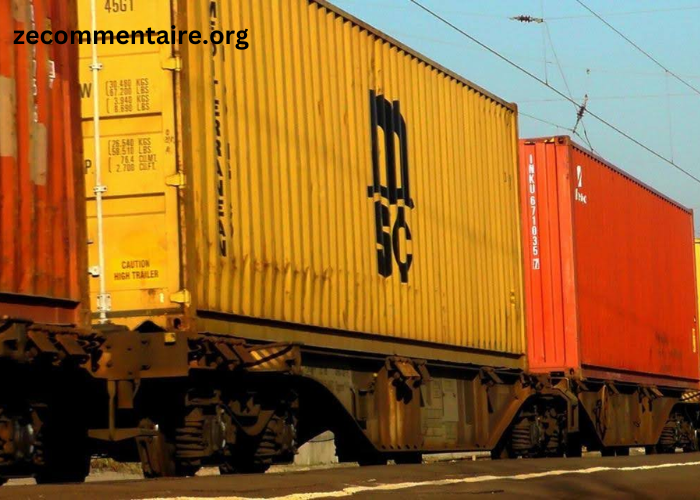Logistics technology transforms the way goods are moved and tracked. With advanced software and smart devices, companies can now ensure faster deliveries and real-time tracking. Automated systems also help reduce errors and improve efficiency.
Implementing these technologies makes a huge difference in how logistics operations are managed. In this blog, we will explore how automation & logistics technology shape the warehousing industry.
Inventory Management Systems
Inventory management systems are vital for boosting warehouse efficiency. They use software to monitor stock levels and track products. This reduces mistakes and saves time.
These systems also help managers keep the right amount of stock. They alert staff when items are low and reorder things automatically. This means products are always available when needed.
By organizing the warehouse better, these systems speed up the picking process. Workers can find items quickly, reducing downtime. This makes the whole operation run smoother and more profitable.
Automated Storage and Retrieval Systems (AS/RS)
Automated Storage and Retrieval Systems (AS/RS) are a key part of technology in logistics. They use machines to store and pick items without human help. This makes warehouse tasks faster and more precise.
AS/RS also saves space in the warehouse. They use vertical storage, which means stacking items high. This allows more products to fit in a smaller area.
These systems also cut down on labor costs. Since machines handle most of the work, fewer workers are needed. This makes the operation cheaper and more efficient.
The Impact of the Internet of Things (IoT)
The Internet of Things (IOT) is changing logistics in many ways. IoT devices provide real-time data on products throughout the supply chain. Sensors can track temperature and location, making sure items stay in good condition.
Supply chain technology has improved with the help of IoT. Companies can better monitor their fleets and manage delivery routes. This means goods arrive on time and are in great shape.
IoT also helps to reduce costs and waste. It alerts managers to issues before they become big problems. With these tools, businesses can be more productive and profitable.
Warehouse Management Systems (WMS)
Warehouse management systems (WMS) are crucial for running a smooth warehouse. They help track inventory, manage orders, and oversee staff tasks. By using WMS, warehouses can reduce errors and save time.
These systems also improve customer satisfaction. Orders are processed faster and more accurately, so items are shipped out on time. This means happier customers and repeat business.
WMS helps optimize space and workflow. The system guides workers on the best routes to pick items, reducing travel time. It also organizes stock to make better use of warehouse space.
Gate Automation
Logistics gate automation simplifies the process of managing entry and exit at warehouses. It uses smart technology to allow authorized vehicles to enter and leave without delays. This helps keep the flow of goods running smoothly.
Automated gates also improve safety and security. Cameras and sensors monitor the area, stopping unauthorized access. This ensures that only permitted vehicles and people can get in.
Gate Automation also cuts down waiting times for trucks. Quicker entry means less congestion and lower fuel costs. With logistics gate automation, the entire operation becomes faster and more efficient.
Robotics in Warehousing
Robotics in warehousing is a big part of logistics innovation. Robots can pick and move items quickly. This makes the process faster and less costly.
Robots also help to keep workers safe. They take on the heavy lifting, reducing the chance of injury. As a result, warehouses run more smoothly.
Robots work around the clock. They don’t need breaks, so they can work non-stop. This leads to higher productivity and efficient operations.
Blockchain Technology in Logistics
Blockchain technology is changing the way logistics work. It makes transactions secure and transparent. This means everyone can trust the information.
With blockchain, companies can track goods from start to finish. Every step is recorded, so there is no room for mistakes. This helps stop fraud and theft.
Blockchain also speeds up payments. Since our records are clear and safe, payments are made faster. This improves cash flow and keeps operations moving smoothly.
Drones for Inventory Management
Drones are becoming useful tools for managing inventory in warehouses. They can fly through shelves quickly and scan barcodes. This means inventory checks take less time and fewer workers.
Drones also help to reduce mistakes. They provide accurate counts and spot misplaced items. This improves overall warehouse efficiency and keeps stock records up-to-date.
Using drones makes warehouses safer too. Workers don’t need to climb ladders or use heavy equipment. Instead, drones handle these tasks, making the inventory process safer and faster.
Artificial Intelligence (AI) in Logistics
Artificial Intelligence (AI) is changing logistics in many ways. AI can predict demand and show you the best routes for deliveries. This helps companies save time and money.
AI systems also help in sorting and packing items. They can do these tasks faster and more accurately than humans. This means fewer mistakes and quicker shipping.
AI can watch for problems in real time. It checks for delays or issues with deliveries. This allows companies to fix problems quickly and keep customers happy.
Automated Guided Vehicles (AGVs)
Automated guided vehicles (AGVs) are robots used in warehouses for moving goods. They follow a set path and can carry heavy loads without human help. This makes the moving process faster and safer.
AGVs use sensors to navigate through the warehouse. They can avoid obstacles and follow the best route. This helps to reduce accidents and improve efficiency.
Using AGVs also lowers labor costs. Since machines do the heavy work, fewer workers are needed. This makes the warehouse run more smoothly and saves money.
The Future of Warehousing with Logistics Technology
Logistics technology continues to shape the warehousing industry. Innovations like AI, gate automation, and AGVs improve efficiency and reduce costs. These advancements make warehousing a smoother operation every day.
By adopting these technologies, companies can stay competitive. An efficient warehouse leads to satisfied customers and higher profits. Implementing logistics technology is essential for future success.
Did this article help you? If so, take a look at some of our other blog posts for more informative reads.





